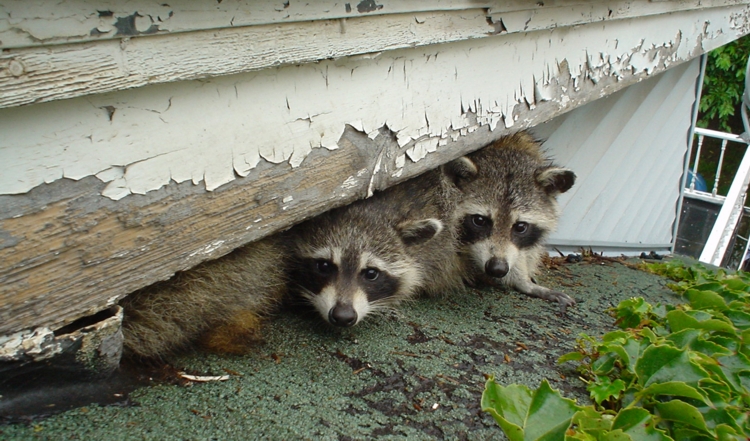Favorite Raccoon Entry Points
Homeowners might worry about raccoons finding a way into their homes. Fortunately, raccoons don't seem to be too creative when it comes to nesting sites in houses, seeking high points more than anything. Raccoons are capable climbers. Their paws have nimble fingers, capable of gripping and climbing. A house's attic space represents a perfect place to build a home. Many homeowners avoid the attic, meaning it is quiet and dark. As a nocturnal species, raccoons love the dark during the day. Because raccoons are nocturnal, homeowners are less likely to notice the animal. The animal only moves around when people are sleeping. However, knowing the animal's preference for the attic, homeowners can narrow down potential entry points. Knowing common entry points can help you prevent access.1. Roofs
The primary access point to your house for raccoons is the attic. The capable critters will climb up the side of your home or available trees to get onto your roof. Once on your roof, the animal is motivated to get inside. It will search the roof's perimeter, looking for loose siding, shingles, or anything else for a vulnerability. If it finds a vulnerable entry, it will do everything in its power to get inside. Using its paws, claws, and teeth, a raccoon will chew and pull at materials to create openings. A raccoon only needs about a four-inch-wide opening to get inside your home. The best way to prevent rooftop entries is to inspect your roofline several times per year. You may want to hire a wildlife expert to assess the property because they know what to look for.2. Chimneys
Homeowners often overlook chimneys, but they represent easy access points for wildlife. Raccoons are only one type of animal that might come crawling or falling down your chimney. If your chimney is open, you might have a furry surprise in the morning. If the chimney is closed, the animal might not make it into your home, but it might be trapped, requiring assistance. You can prevent a chimney break-in by topping it off with handwear mesh. The wire mesh stretches over the chimney vent, allowing smoke to bellow out and keeping everything else from falling in.3. Vents
Roof vents provide another point of access for raccoons. The vents can create a barrier when secured well, but older or loose vents are nothing for a raccoon to pull away. The worst part is you may not notice the damage to the vent. Many vents are tucked away, out of sight and mind, meaning raccoons may have time to establish a good size nest in your attic before you notice something amiss.Raccoon Prevention Tips
Wildlife control in Madison may not be necessary if you commit to several prevention tips. Some of the top tips for raccoon prevention include:- Use trash bins with lockable lids
- Keep pet food indoors in sealed containers
- Maintain your lawn and gardens
- Seal opening under structures



